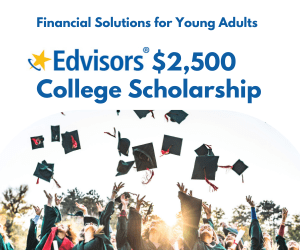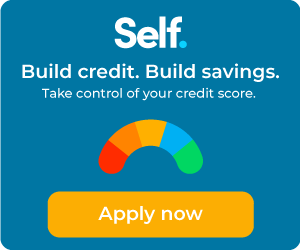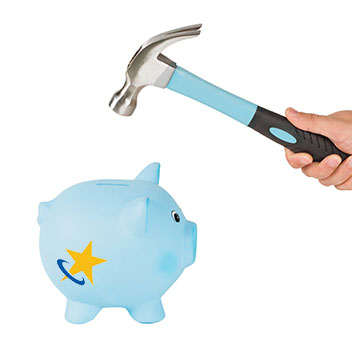Paying off student loan debt as quickly as possible is a priority for many. And if you have student loan debt as high as six figures ($100K+), it can be overwhelming to face. While there is no one-size-fits-all approach to repayment, certain strategies can help you pay off your student loans faster, even if you can only apply one tactic at a time.
Immediate Repayment
The first way to pay your loans back quickly is to not delay the inevitable. In other words, you can start repaying your loans shortly after graduating (or withdrawing from school) even before your first official payment is due. Better yet, if you can afford to make interest payments while you’re still in school, you can save a considerable amount of money.
Grace Period
You may recall that before your first payment is due, you will be given a grace period following your graduation or exit from school. For federal loans, the grace period is 6 months. And for private student loans the grace period could be as long as 9 months. There is no rule that says you cannot make voluntary payments during this time. Plus, if you have any subsidized loans, the government is paying the interest on your behalf during the grace period. In theory, you could make interest free payments for 6 months.
Student Loan Payments
You can accelerate your student loan payments without any prepayment penalty. This is true for your federal loans, as well as any private student loans you may have. You can choose to pay more than the minimum payment amount each month to help reduce the principal balance faster. If you get paid biweekly from your job, you may want to consider sending a student loan payment twice per month.
Example
| Loan Amount | Interest Rate | Monthly Payment | Extra Monthly Payments | # Years |
|---|---|---|---|---|
| $100,000 | 8% | $1,213 | $0 | 10 |
| $100,000 | 8% | $1,213 | $500 | 6 yrs, 3 mo |
| $100,000 | 8% | $1,213 | $750 | 5 yrs, 3 mo |
The exact payment amount you send will depend on how quickly you want to pay off your loans based on your available funds. Obviously, you’ll want to pay more than the required payment amount due, and you’ll also want to take note of how much of your payment goes to interest each month so you can surpass that enough to make a significant dent on your principal balance. You can always ask your lender for this breakdown.
You’ll save the most money in the long term by using the avalanche method (paying off loans with the highest interest rates first) vs. the snowball method (paying off loans with the lowest balances, even if the interest rates are lower). Once you’ve paid off one loan, use the same payment amount on the next loan to help pay that debt sooner.
Many borrowers challenge themselves to stick to a strict budget and cut out all unnecessary expenses. You may even want to pick up a side gig or seasonal job to help bring in more money for your student loan payoff.
Bank Account Deduction
If you sign up for automatic payment deductions (auto pay) from a bank account, you can save 0.25% on your interest rate. You can use a savings account or checking account for this. Pro tip: You can change the payment amount when you sign up for auto pay.
Repayment Options—Federal Loans
Now that we’ve covered the basics of your payments and when they start, let’s get into specific repayment options that can give you more advantages when paying off your student loans.
Standard Repayment Plan
Unless you request an alternative payment plan, your federal loan(s) will fall under the standard repayment plan. This means your monthly payments will be at least $50 per month with up to 10 years to repay, depending on your loan balance. Individuals with high loan balances may be tempted to consolidate their loans, thereby extending the repayment term. This may help lower monthly payments in the short term, but standard repayment is more efficient.
Payment Based on Your Income
Payment plans based on your income are available in the federal student loan program if you meet qualifying criteria. This includes income based, income contingent, and pay as you earn programs that fall under the Income Driven Repayment (IDR) plans. Even if you utilize one of these plans, you can pay more than the minimum required payment amount.
Income Driven Repayment (IDR) Plans
Income Driven Repayment (IDR) plans will help you extend your repayment term for up to 25 years while setting monthly payment limits based on discretionary income or hardship. To be clear, using one of these plans will not help you pay off your loans more quickly.
Federal Student Loan Forgiveness
Student loan forgiveness in the federal program is also known as cancellation or discharge. If you are eligible, it means a portion or all your student loan debt will be dismissed. However, you will need to make a minimum number of qualifying payments or be employed in a particular service for a minimum number of years.
Public Service Loan Forgiveness (PSLF)
If you work full-time at an approved public service job, you may be eligible for Public Service Loan Forgiveness (PSLF). Enrolling in the PSLF program will not help you pay off your loans quickly. In fact, quite the opposite. You need to make 120 qualifying monthly payments to receive payment toward the balance of your student loan debt. This means if you were to pay off your student loans sooner, you will no longer qualify for PSLF.
Teacher Loan Forgiveness (TLF)
The Teacher Loan Forgiveness (TLF) program offers loan cancellation in amounts up to $17,500 after completing five consecutive years of teaching at a qualified school or agency. Like PSLF, you’ll want to take the qualifying period into account before paying off your student loans too soon.
Refinancing
Refinancing is a good option when it comes to your payoff strategy. You can reduce your interest rate with a student loan refinance which can help you pay less over the life of the loan, even while accelerating payments.
Private Loans
Since there is no loan forgiveness on private student loans, many borrowers choose to accelerate the payoff of their private loans first. This can be a smart strategy to help you retain any benefits you may qualify for in the federal student loan program.
Pay Faster and Save
The faster you can pay back your student loans, the more money you will save on interest fees. Whenever you can pay more than the minimum monthly payment, especially if you can pay more than is required on a regular basis or multiple times per year, the sooner you will repay your debt.
Debt Free
Becoming debt free is an amazing feeling and there are several tools you can use to help you get there. A final consideration related to paying off your student loans quicker is to tap into employer benefits. Some companies offer student loan repayment assistance, in addition to tuition reimbursement. You could be debt-free sooner than you anticipated if your company could help pay your loans.
Credit Score
Paying off your student loans will result in several changes to your credit score. First, your loan holder will report the payoff to the credit reporting agencies. It can take anywhere from 30 to 60 days for your final payment to be reflected on your credit report. From there, you may see a small dip in your credit score initially. Here’s why:
- Your credit mix will change (i.e. the makeup of revolving credit vs installment loans). Your credit mix accounts for about 10% of your FICO® Score.
- The length of your credit history may change; especially if your student loans were your oldest accounts. Payment history accounts for up to 15% of your FICO® Score.
Don’t worry; in the long run paying off your student loans will have a positive effect because your debt-to-income ratio will improve and your positive credit history will remain for up to 10 years. More importantly, having additional cash flow will not only bring peace of mind, but will help with other financial goals such as emergency savings, investing, making a down payment for a house, etc.







